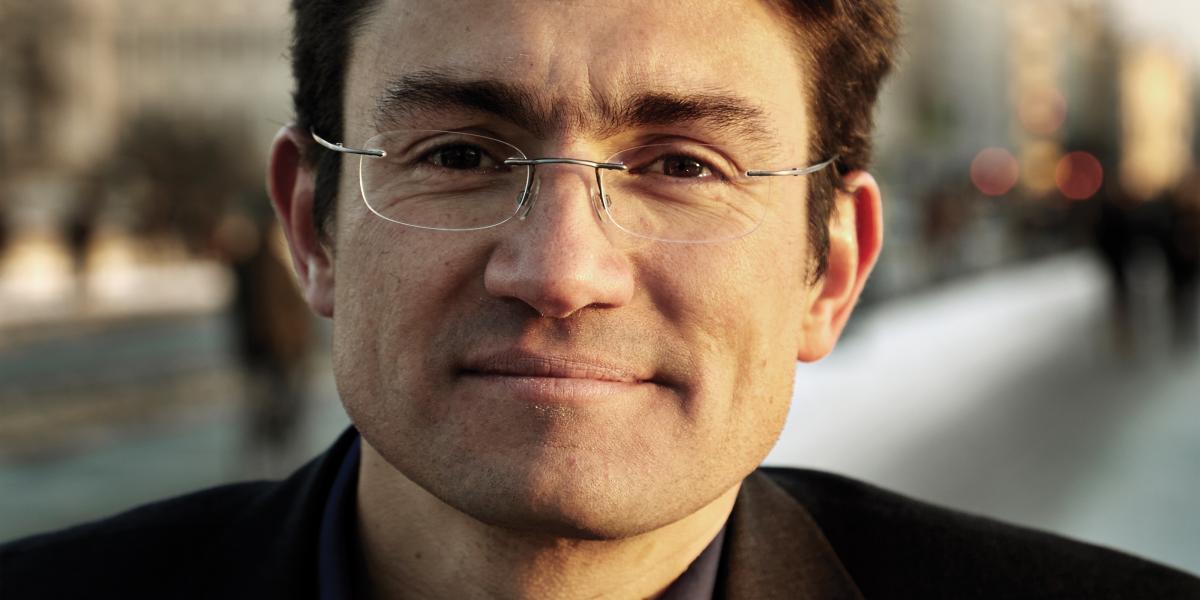The Mathematics of Mortality
Demographer Vladimir Canudas Romo uses beautiful equations to study living populations
Vladimir Canudas Romo, PhD, is a glass-half-full kind of guy. Demographically speaking, at least.
In certain research circles, a debate rages about whether well-to-do humans living in places like Japan, France and the U.S., where life expectancies have been increasing dramatically for the past century and a half, can keep on living longer and longer. Isn’t there a limit?
Some mortality forecasters say there is; in fact, they warn that Americans’ life expectancy will decline. The reason: obesity. “Me, I’m less confident that the obesity epidemic will have such a fast and clear-cut impact in producing a decline in life expectancy,” says Canudas Romo, a demographer, an assistant professor in Population, Family and Reproductive Health at the Bloomberg School and an associate professor at the University of Copenhagen. “I think life expectancy will keep inching up; maybe at a slower rate, but still increasing.”
Why are you optimistic about our life expectancy rate?
There’s nothing modest about the life expectancy increase over the recent past: In 160 years, average life expectancy moved from levels of around 40 years—where it was for a long time throughout the ages—to above 80 in the U.S. and above 86 in Japan. That’s an increase of 2.5 years per decade in Japan and slightly less for the U.S. Why should it stop suddenly?
Give us some historical context in terms of life expectancy.
If we go back to about halfway through the 19th century, there were some fundamental developments in public health, medicine, economic development, nutrition, education and household conditions. Those changes had a major impact on the health of whole populations. And by health, I mean less death.
Is the big increase in life expectancy in the last 160 years attributed to reduced child mortality?
The first “big steps for humanity” occurred when child and infant mortality started to reduce, and the demographic and epidemiological transitions started their long road of change.
For developed countries until the 1950s, changes in infant mortality were the main reason [behind] the life expectancy change. Today, improvements at older ages [are why] we keep gaining years of life. For many developing countries, reducing infant mortality will give them many extra years. A population that has a life expectancy around 40 is actually divided into two big groups: those that die in the first years of life and those that not only make it to 10 but will likely reach a life span of around 70.
Can you explain the gender gap in life expectancy?
Life expectancy for females is probably about four to five years higher than that of males. Japanese females—who live, on average, longer than anyone else—have a life expectancy of 86.5, compared to Japanese males, at 79.5.
It was just recently, probably in the first decade of the 21st century, that life expectancy for females passed that of males in every single country in the world. In some countries, female life expectancy had been lower than, or about the same as, that of males. Indian females, for example, passed their male counterparts in terms of life expectancy in the early 2000s. But still, if you go to certain Indian states, there is higher mortality among females than males at ages below 5. Biologically it would be hard to explain [that] since in other populations, females have lower mortality at every single age compared to males. Are we then observing some sort of sex preference for boys over girls in terms of care of children under 5? Life expectancy aggregates all the mortality information. So even though there are certain ages in India where females have not surpassed males in terms of survival, life-expectancy-wide they have.
Tell us about another pivotal moment in demography.
In terms of mortality alone, it was an exciting moment when the United Nations declared it wouldn’t put any more ceilings on life expectancy projections. It may not seem groundbreaking to many, but for demographers like me who are called to look at projections of populations, it made us realize a few things. Among them was that life expectancy has been very badly predicted, and so too future population.
What do demographers base their predictions on?
We look at mortality, fertility, population growth, migration, mathematics and change. Permanent change. Demography is a moving target. To study it, we use lots of mathematical methods and beautiful equations.
Tell us about a project you’re working on now.
I come from Mexico, and one of the things that interests me is how many years of life expectancy have been lost due to violence resulting from almost a whole decade of tragic atrocities. Many of these deaths are among young people, so also, I wonder about how much of the workforce in Mexico has been lost because of violence.
You teach a course in mortality. What do your students learn?
Mortality is probably the best predictor of how healthy your population is. If you have exact numbers that tell you the ages people were when they died, then you have the information that you need to determine the health of that population, namely its mortality level.
My students address questions like: How will life expectancy change if HIV is eliminated? How many years of life are lost in a population because of smoking? Can you come up with a whole mortality pattern for a country that has only a little information on infant mortality and no census data or vital statistics?
I couldn’t, but I bet you could.
Well, I can give you a guess!
